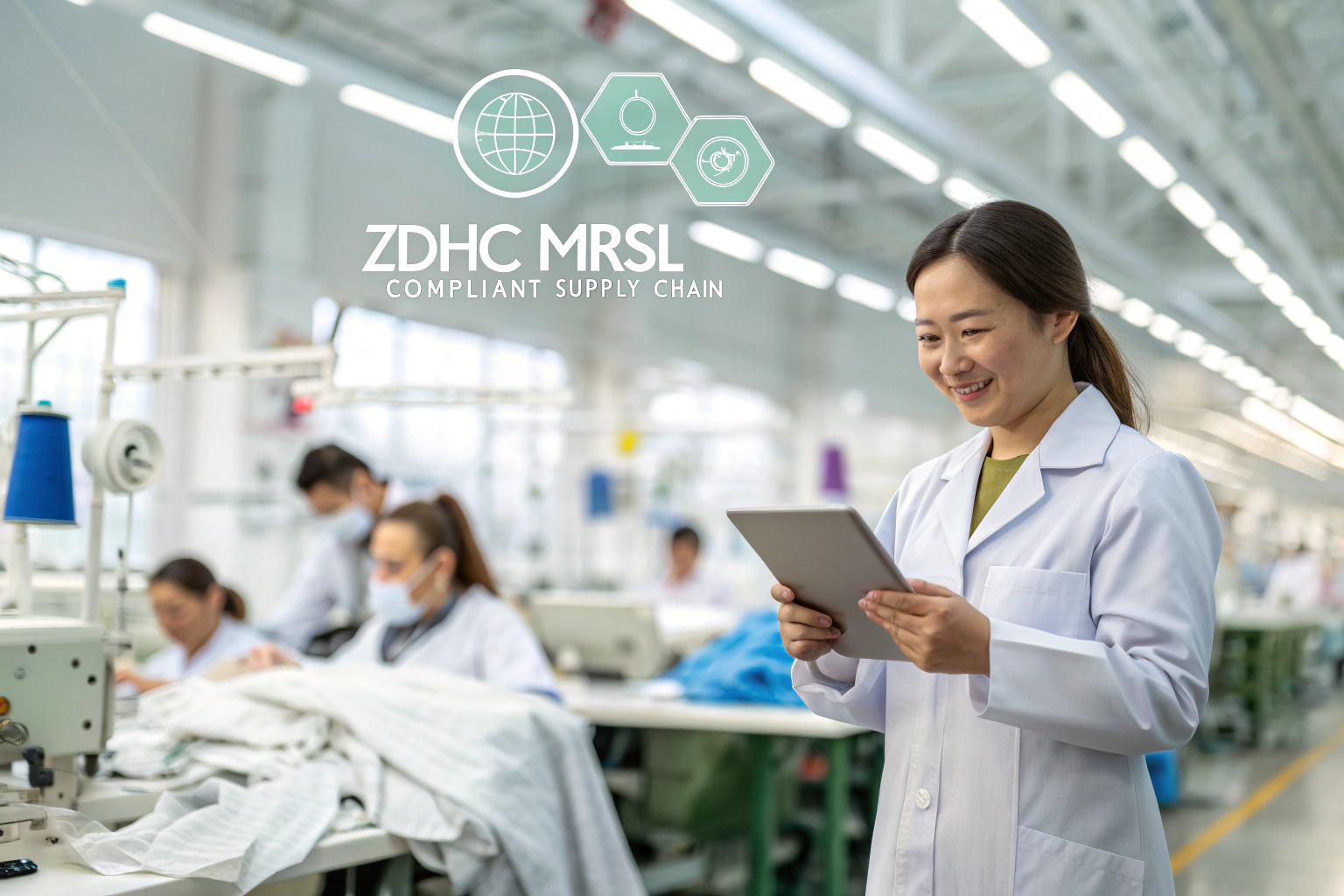As a fabric manufacturer with over two decades in the textile hub of Keqiao, I've seen the industry's chemical management evolve. Many of our global partners, especially those from the US and EU, are now asking a critical question: "How do you ensure the chemicals in your fabrics are safe and sustainable?" This isn't just about compliance; it's about building trust for the future.
The ZDHC Manufacturing Restricted Substances List (ZDHC MRSL) is a list of chemical substances banned from intentional use in textile, leather, and footwear manufacturing processes. It matters because it helps brands, suppliers, and manufacturers like us systematically manage chemical inputs, ensuring safer products and a cleaner environment. For any business sourcing fabrics, partnering with a supplier who is well-versed in the ZDHC MRSL is no longer optional—it's a core component of risk management and product integrity.
Understanding the ZDHC MRSL can seem complex, but it's fundamental to modern, responsible fabric production. Let's break down why this framework is crucial for your supply chain and how it directly impacts the quality and safety of the fabrics you source.
What is the ZDHC MRSL?
You might have heard of restricted substances lists, but the ZDHC MRSL is different. It focuses on the chemicals used during production, not just the residues left on the final product. This proactive approach is key to cleaner manufacturing.
The ZDHC MRSL is a list of chemical substances that are restricted from intentional use in facility processes. It targets the inputs—the dyes, auxiliaries, and cleaning agents used in mills and factories. The goal is to prevent these restricted substances from ever being discharged into the environment or ending up as unwanted residues on your finished fabrics. This is a shift from traditional compliance, which often only checks the final product.
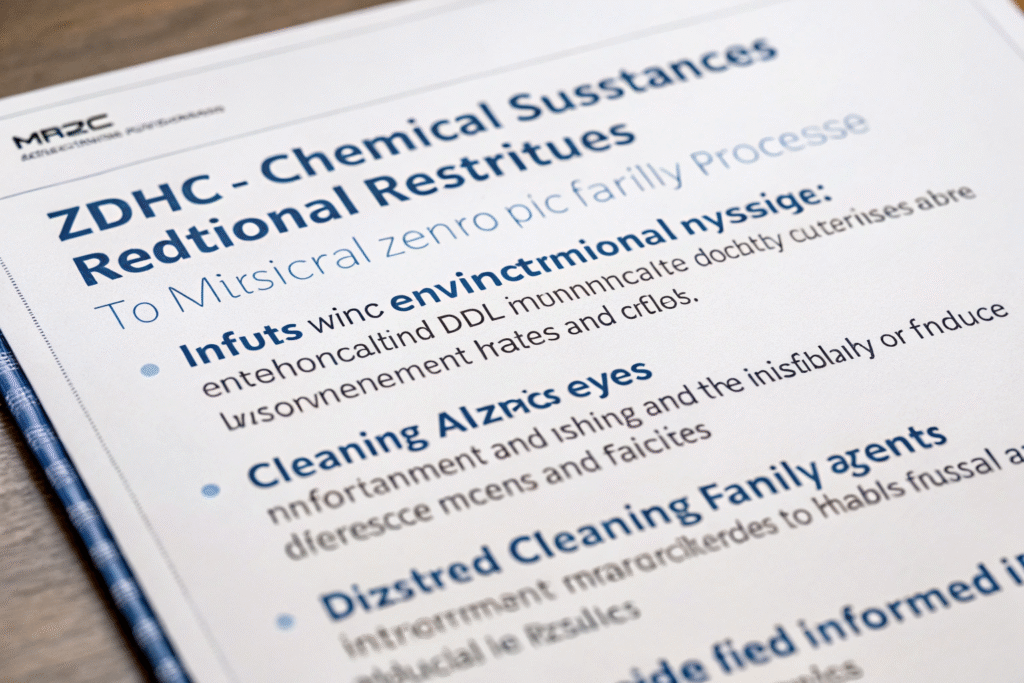
How does MRSL differ from RSL?
Many people confuse an MRSL with a standard RSL (Restricted Substances List). An RSL, like those from AFIRM or OEKO-TEX®, focuses on the final article. It sets limits on harmful substance residues in the final product you hold in your hand. In contrast, the ZDHC MRSL focuses upstream on the manufacturing process. It restricts the intentional use of listed chemicals in production, aiming to eliminate pollution at the source. Think of it this way: an RSL checks for a problem in the outcome, while an MRSL prevents the problem from happening in the first place. You can learn more about this distinction on the ZDHC Foundation website and see how brands use tools like the Higg Index to measure this.
Why was the ZDHC MRSL created?
The ZDHC MRSL was created to standardize chemical management across the global supply chain. Before its existence, every brand could have its own list of banned chemicals. This created confusion and inefficiency for suppliers who had to comply with dozens of different standards. The ZDHC program provides a single, unified framework. This common language simplifies compliance, reduces redundant testing, and drives the entire industry toward safer chemical use. Its development was driven by leading brands and stakeholders who recognized that shared environmental responsibility was essential for meaningful change.
Why should fabric buyers care about MRSL compliance?
For a fabric buyer like you, MRSL compliance is not just a "nice-to-have." It's a strategic business decision that protects your brand, ensures product safety, and future-proofs your supply chain. It directly addresses your pain points around quality and risk.
Choosing a fabric supplier who adheres to the ZDHC MRSL gives you a significant competitive edge. It means the fabrics you receive are produced under strict chemical controls, leading to higher and more consistent quality. This compliance minimizes the risk of your products failing safety tests, which can lead to costly recalls, rejected shipments, and damage to your brand's reputation. In today's market, where consumers are increasingly aware, this is a powerful trust signal.
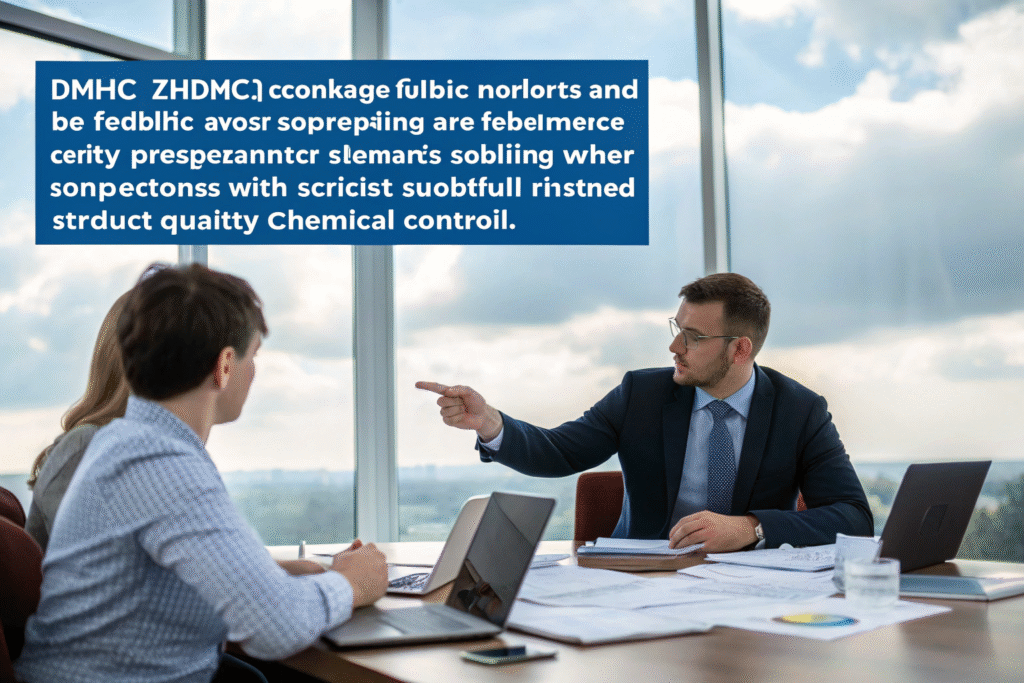
How does MRSL compliance mitigate sourcing risks?
Your primary concerns include timeliness, tariff costs, and security. MRSL compliance directly mitigates these risks. A supplier with a robust chemical management system, verified by MRSL conformance, is inherently more organized and transparent. This reduces the risk of production delays caused by failed lab tests or environmental audits. Furthermore, as governments worldwide tighten regulations on imported goods—such as the EU's REACH regulations—having MRSL-compliant fabrics smoots customs clearance and helps you avoid unexpected tariffs or legal penalties. It’s a proactive shield against evolving trade laws.
What are the brand reputation benefits?
Aligning with an MRSL-compliant supplier strengthens your brand's story. You can confidently market your products as responsibly manufactured, with a lower environmental impact. This resonates powerfully with a growing segment of eco-conscious consumers. It demonstrates due diligence and a commitment to sustainability that goes beyond marketing slogans. This commitment can be a key differentiator, helping you secure partnerships with major retailers and brands that have strict corporate sustainability mandates.
How do we implement ZDHC MRSL in our production?
At Fumao Textiles, implementing the ZDHC MRSL is not a side project; it's integrated into our core operational workflow. Our location in Keqiao gives us direct access to a network of chemical suppliers who are also aligned with this vision, making the transition smoother and more effective.
Our implementation is a two-pronged approach: rigorous chemical inventory screening and continuous wastewater testing. We maintain a comprehensive inventory of all chemical products used in our partner dyeing and finishing mills. Each product must come with a ZDHC Gateway - MRSL Conformance Certificate or a supplier's self-declaration. We then use our in-house CNAS-accredited lab to perform regular tests, not just on the final fabric, but also on wastewater samples to ensure no restricted substances are being discharged.
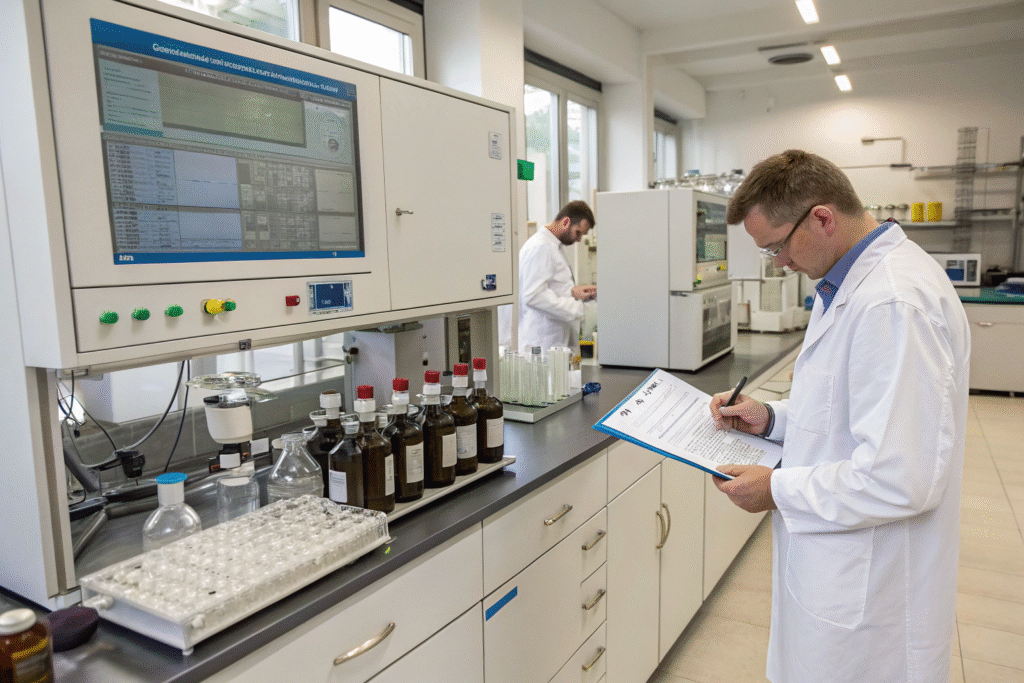
What is our chemical management process?
Our process starts at the source. We partner with chemical suppliers who are also on the ZDHC Gateway. Before any chemical enters our production line, we check its certification. This data is logged in our digital system. Our quality control team then conducts lab dip approvals using only these certified chemicals. This ensures that from the sample stage to bulk production, the chemical inputs are consistently compliant. This systematic approach is a part of our broader quality control protocol that covers every meter of fabric we produce.
How does our lab ensure MRSL conformity?
Our CNAS-certified lab is our frontline defense. We go beyond standard physical tests for composition and colorfastness. We perform advanced chemical testing to detect the presence of any MRSL-listed substances. We use testing standards referenced by ZDHC to ensure international alignment. This capability allows us to provide you with transparent test reports, often from third-party verifiers like SGS, giving you undeniable proof of compliance and saving you the time and cost of external testing.
What are the challenges and solutions in MRSL adoption?
Adopting the ZDHC MRSL across a complex supply chain is challenging. We faced these hurdles head-on and developed practical solutions that ensure reliability without compromising on our delivery speed or your cost expectations.
The main challenges include the higher cost of compliant chemicals, the technical complexity of reformulating old recipes, and ensuring every sub-supplier in the chain is on board. Some traditional, non-compliant chemicals are cheaper and easier to use, but they come with hidden costs and risks that we refuse to accept. Our solution was to invest in long-term partnerships and internal expertise.
| Challenge | Our Solution |
|---|---|
| Cost of Compliant Chemicals | Bulk purchasing agreements with certified suppliers to reduce costs. |
| Complex Reformulation | Dedicated R&D team to develop new, compliant dyeing and finishing recipes. |
| Sub-Supplier Compliance | Mandatory compliance in our supplier contracts and regular audits. |
| Technical Knowledge Gap | Continuous training programs for our staff and partners. |
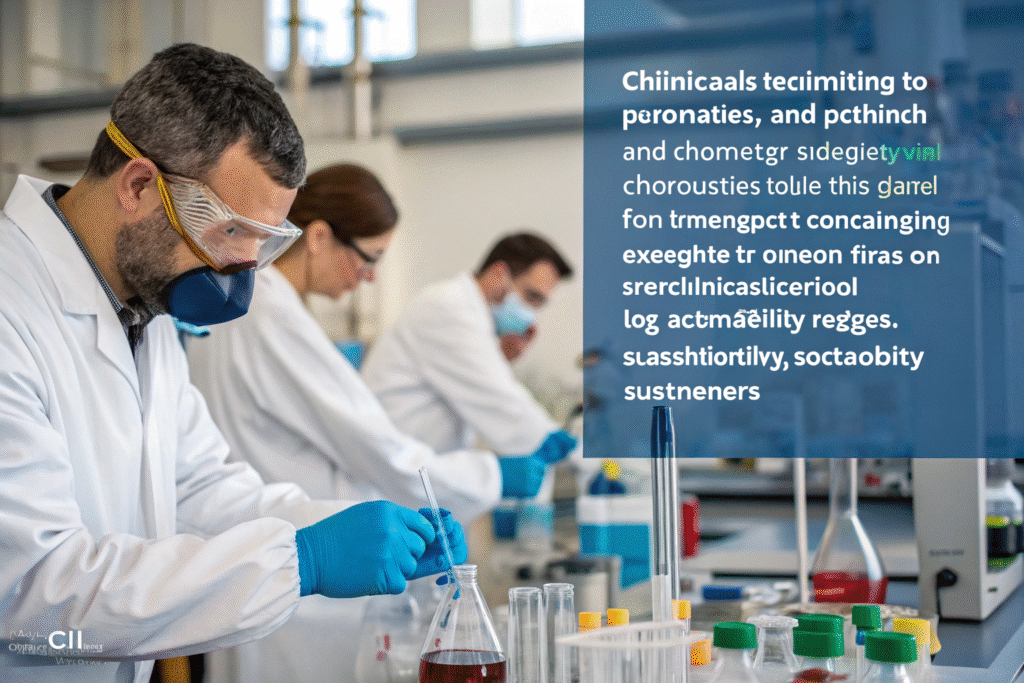
How do we manage cost without sacrificing compliance?
We absorb a significant part of the cost pressure through strategic sourcing and efficiency. Our large-scale operations in Keqiao give us bargaining power with top-tier chemical suppliers. Furthermore, our agile R&D team has mastered the art of creating high-quality fabric effects using compliant chemicals efficiently, reducing waste and saving costs in the long run. This means you get MRSL-compliant fabrics without unpredictable price surges, providing you with the stable, efficient pricing you need.
How do we ensure supply chain transparency?
Transparency is the biggest hurdle in a multi-tier supply chain. We solve this with technology and strong relationships. Our advanced QR code tracking system allows us to trace the origin of the chemicals used in your fabric. We also conduct regular, unannounced audits at our partner mills and finishing houses. We treat them as an extension of our own factory, imposing the same strict standards. This end-to-end control is how we guarantee that our commitment to the ZDHC MRSL is upheld at every single step.
Conclusion
The ZDHC MRSL is far more than a technical checklist; it is the backbone of responsible fabric manufacturing in the 21st century. It provides a clear, unified path for brands and suppliers to ensure product safety, protect the environment, and build consumer trust. For fabric buyers, choosing an MRSL-compliant partner is a direct investment in supply chain resilience, brand integrity, and long-term market success. It transforms a potential risk into a definitive competitive advantage.
Navigating the complexities of sustainable fabric sourcing requires a partner who has already done the hard work. At Fumao Textiles, our commitment to ZDHC MRSL compliance, backed by our in-house CNAS lab and integrated supply chain, guarantees that you receive fabrics that are not only high-quality and innovative but also produced to the highest standards of chemical responsibility. Let us help you mitigate risks and elevate your brand. If you are looking to produce your own clothing line with fabrics you can trust, please reach out to our Business Director, Elaine. She will connect you with our team of experts. You can contact her directly at elaine@fumaoclothing.com to start a conversation about your next order.

